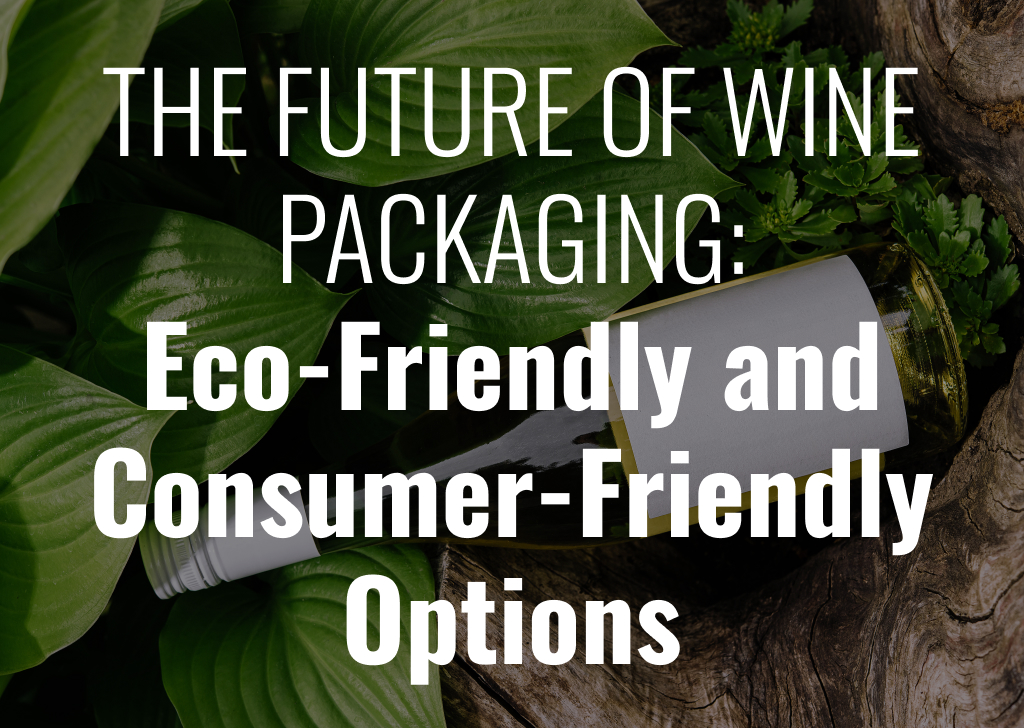The wine industry is undergoing a significant transformation, driven by the increasing demand for sustainable practices that extend beyond grape cultivation. The latest example is packaging. As consumers become more environmentally conscious, the future of wine packaging is evolving to be both eco-friendly and consumer friendly. This shift is not just about preserving the product but also about protecting the planet and meeting the changing needs of today’s wine enthusiasts.
The Push for Sustainability
Environmental concerns are a primary driver behind the shift toward sustainable wine packaging. Traditional glass bottles, while iconic, have a substantial carbon footprint due to the energy required for production and transportation. Glass bottles account for nearly 29% of the wine industry’s carbon emissions. In response, wineries are exploring alternatives that reduce environmental impact without compromising quality.
One significant trend is the adoption of lightweight bottles. Wineries can lower their carbon footprint by reducing the amount of glass used. Lighter bottles are more energy-efficient to produce and transport, making them a more sustainable option. Additionally, some producers are experimenting with recycled glass, lessening the environmental impact.
Alternative Packaging: Beyond the Bottle
While glass bottles remain standard, alternative packaging options are gaining popularity. Bag-in-box wines, for example, use significantly less material than traditional bottles and are more energy-efficient to produce and transport. These wines also tend to have a longer shelf life once opened, reducing waste from spoilage.
Tetra Pak cartons are another lightweight, recyclable option with a lower carbon footprint than glass. They are particularly popular for casual, everyday wines and are convenient for on-the-go occasions where glass bottles may be impractical.
Canned wine is also on the rise, especially among younger consumers. Cans are portable, easy to recycle, and offer portion control, aligning with modern consumers’ values of convenience and sustainability.
The Role of Innovation in Wine Packaging
Innovation in wine packaging extends beyond materials to design and functionality. Smart packaging is an emerging trend that uses technology to enhance the consumer experience. For instance, some wine producers add QR codes to their labels, allowing consumers to access detailed information about the wine’s origin, production, and tasting notes. This adds value for the consumer and strengthens the connection between the producer and the customer.
Packaging that extends wine’s shelf life is another area of innovation. For example, VinPerfect’s screw cap allows for controlled oxygen ingress, improving the aging process and reducing spoilage risk. This technology offers a more sustainable alternative to traditional cork closures.
Consumer-Friendly Packaging: Convenience and Aesthetics
While sustainability is a key driver, consumer convenience and aesthetics also play crucial roles in the evolution of wine packaging. Single-serve options, such as mini bottles and cans, cater to consumers who want to enjoy wine without committing to a full bottle. This is particularly appealing to individuals living alone or those seeking variety in their wine choices.
Aesthetics are equally important, as packaging is often the first point of contact between the consumer and the product. Eye-catching designs and premium-looking materials can influence purchasing decisions, especially in a crowded market. Some producers are embracing minimalist designs that reflect their products’ clean, eco-friendly nature. In contrast, others experiment with bold colors and unique shapes to stand out on the shelf.
The Challenges Ahead
Despite progress, challenges remain in adopting eco-friendly wine packaging. One of the biggest hurdles is consumer perception. While alternative packaging formats like cans and Tetra Paks offer numerous benefits, they still face skepticism from consumers who associate premium wine with glass bottles and cork closures.
Furthermore, recycling infrastructure varies by region, impacting the overall sustainability of these options. For example, while Tetra Paks are recyclable, not all recycling facilities can process them, highlighting the need for continued investment in recycling infrastructure.
The Future of Wine Packaging
As the wine industry evolves, the future of wine packaging will likely be shaped by a blend of sustainability, innovation, and consumer preferences. Producers who embrace eco-friendly packaging options and invest in innovative solutions will not only reduce their environmental impact but also meet the growing demand for products that align with the values of today’s consumers.
In the coming years, we can expect to see a broader range of packaging options that cater to different consumer needs, from traditional glass bottles to alternative formats like cans and Tetra Paks. As consumers become more educated about the environmental impact of their choices, the demand for sustainable wine packaging will continue to grow, driving further innovation in the industry. The future of wine packaging is bright, with eco-friendly and consumer-friendly options leading the way. By embracing these changes, the wine industry has the opportunity to preserve the quality of its products and protect the planet for future generations.
